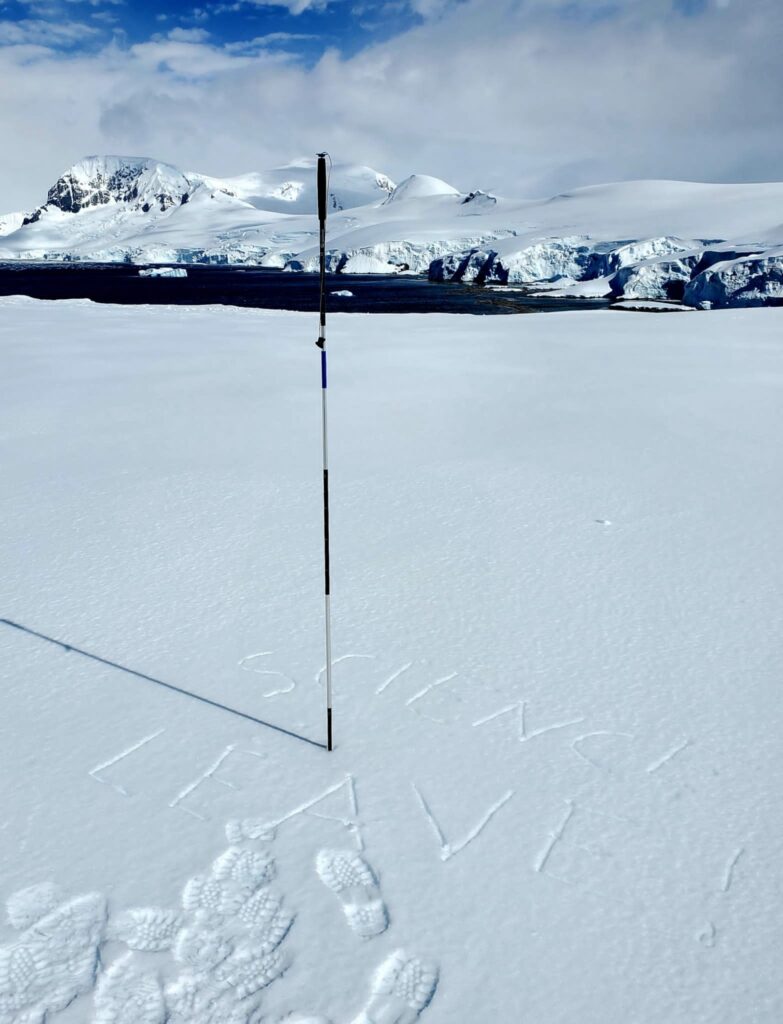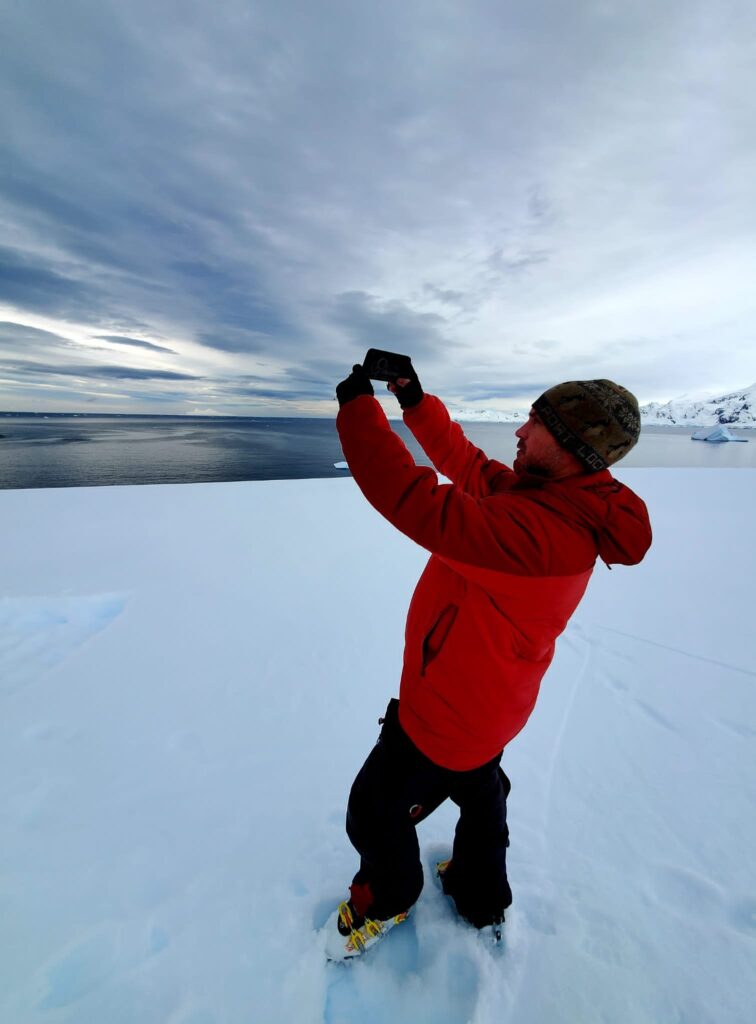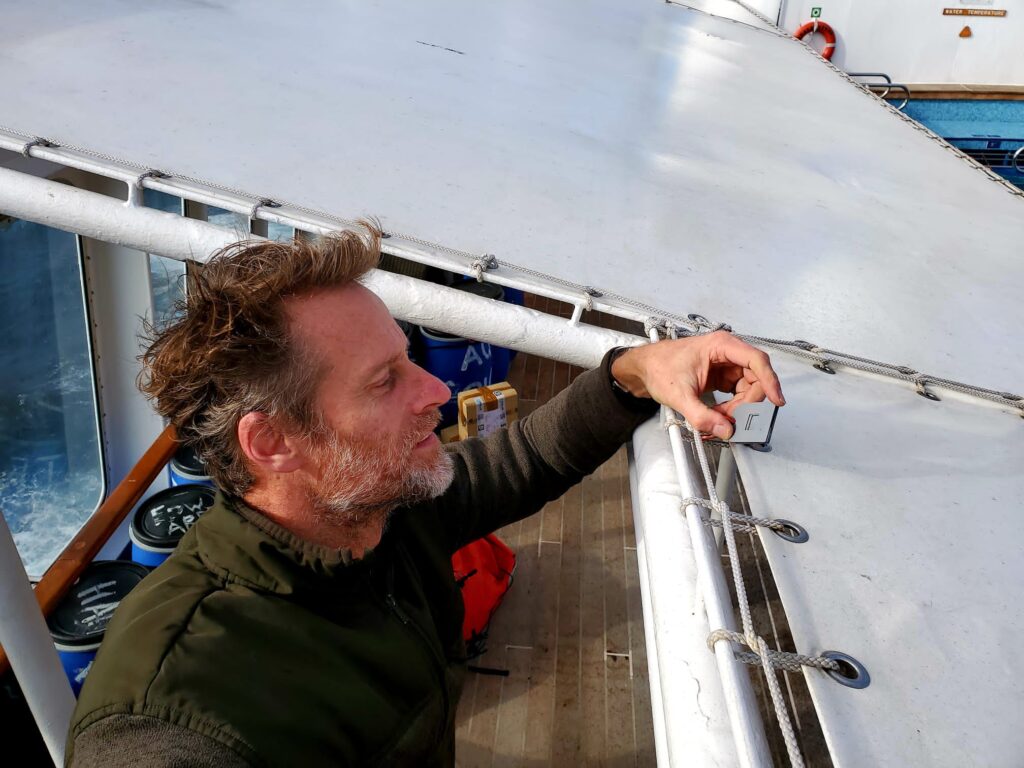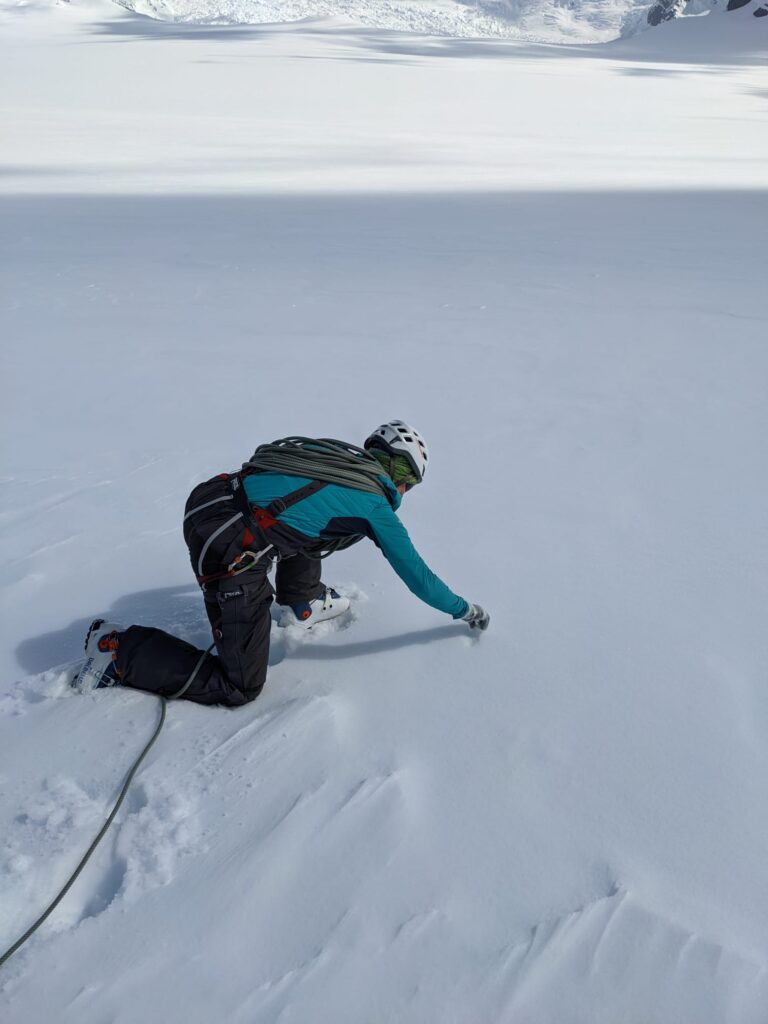In his concluding situation report, Paul leaves it to others to judge whether Antarctic Quest 21 was a successful expedition.
I’ll try to provide him with an answer for his Priority 3: Science.
The expedition team had planned to support eight scientific investigations, of which two were reluctantly withdrawn by the scientists for logistical reasons.
On 14 December 2021, the team landed at Portal Point and the science leads Cat Cameron and Martin Densham were briefed, prepared and had kit for six projects:
- NASA GLOBE Observer: Cloud (✓)
- UV radiation dose (✓)
- Metal concentration in snow (✓)
- Long-range transport of microplastics (✓)
- Short-term snow accumulation (✓)
- Isostatic rebound (×)
The markers in the brackets in the list above show that five out of six projects were achieved. Not bad for an expedition that was hampered by one in four days, when they could not move (but that’s a different story).
Summary:
Sky observations were made and UV dosimetry patches were deployed daily, adding valuable data to NASA GLOBE and providing measurements of UVB radiation at altitudes between sea level and 1050 m.
Unfortunately, the adverse weather and early extraction prevented the team from reaching the intended destination of the expedition, Foyn Point, and therefore, the upgrade of the National Science Foundation (NSF) GPS receiver was not achieved.
Snow accumulation poles were placed at camps and caches along the route and measurements recorded periodically while camps were occupied for several days, and when they were revisited. This data collection would have been even more beneficial it the expedition had reached the centre and eastern shore of the Peninsula.
Snow accumulation pole, Antony Jinman taking sky observations, Martin Densham inspecting UV badge aboard SeaVenture, Cat Cameron taking snow samples. (c) Antarctic Quest 21.
Snow accumulation pole, Antony Jinman taking sky observations, Martin Densham inspecting UV badge aboard SeaVenture, Cat Cameron taking snow samples. (c) Antarctic Quest 21.
The team filled 15 steel bottles with snow samples for microplastic analysis. While the intention was to reach even more remote locations, these samples will help to evaluate the airborne transport of these pollutants from two angles of investigation: short-range, related to the relative proximity of a tourist landing spot for the cruise ship industry and long-range, from offshore sources.
Around 50 vials for metal analysis analysis were filled, following strict protocols to avoid contamination. For Dr Angela Milne, the expedition was a ‘win-win’. Today, she told me:
“Obtaining snow samples from such a hard to sample region is gold dust for the contribution it will make to understanding the global cycling of trace elements between the atmosphere (air), oceans, land and cryosphere (ice). Atmospheric samples of particles from the Antarctic Peninsula are rare and now, the expedition team have collected even rarer freshly deposited snow for us. Even though we have the expertise and technical capabilities at the University of Plymouth to chemically analyse metals at very low concentrations, these samples will be challenging. We will test for a whole suite of metals associated with anthropogenic processes, such as the burning of fossil fuels, as well as metals that are important micro-nutrients for the ocean food web.“
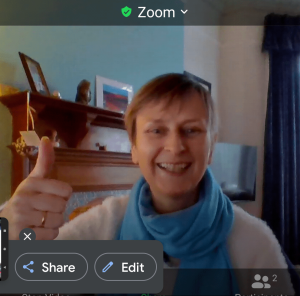
The next steps involve getting the samples and observational data to the scientists. Their work may take days or weeks in the laboratory and following that, it requires expertise to synthesise and interpret the data in the context of what is already known. Whether the expedition provided the first steps for ground-breaking discoveries, or incremental advances in knowledge and understanding, remains to be seen in the months to come.
From generation to generation, the work of scientists is never done.
FOLLOW AND CONNECT WITH THE EXPEDITION ON SOCIAL MEDIA
Many thanks to all of our friends, sponsors and supporters who are backing the Antarctic Quest 21 expedition, including:
NAAFI Team Army/Team Ethos Costain Group PLC BetterYou Ltd Applied Satellite Technology LtdGreencastle Consulting Klättermusen AB Fjellpulken AS Polar Latitudes Clean Planet Energy PlanetLabs.Earth LikeToBe.org LGfL Devon and Plymouth Chamber of Commerce Royal Geographical Society Prof Dr Ger Graus OBE Phil Carrotte Tim Ellis Twin Science & Robotics Verofax Limited Alpenverein Osterreich Beyond Exploration Shackleton Whisky Paul Read Martin Holland, FRGS USNAR Polar Science and Technology Program The Ulysses Trust Expedition Base Camp Anjuli Selvakumaran Elliot Brown Watches University of Plymouth Utrecht University The University of Manchester Durham University University of Tasmania Challenging Habitat AndrewSmedley PippaWhitehouse Colonel Paul John Edwards MBE The Honourable Alexandra Shackleton Lieutenant General Richard Nugee CB CVO CBE AngelaMilne Simon Ussher Nigel Marley MichielvanDenBroeke ImogenNapper Emily Whitehead Kate Retallick Claire Grogan FRGS Charlotte Braungardt
LATEST UPDATES

“Dr Charlotte Braungardt is a freelance environmental scientist working through her consultancy Challenging Habitat. She is the scientific advisor for the Antarctic Quest 21 expedition.”
